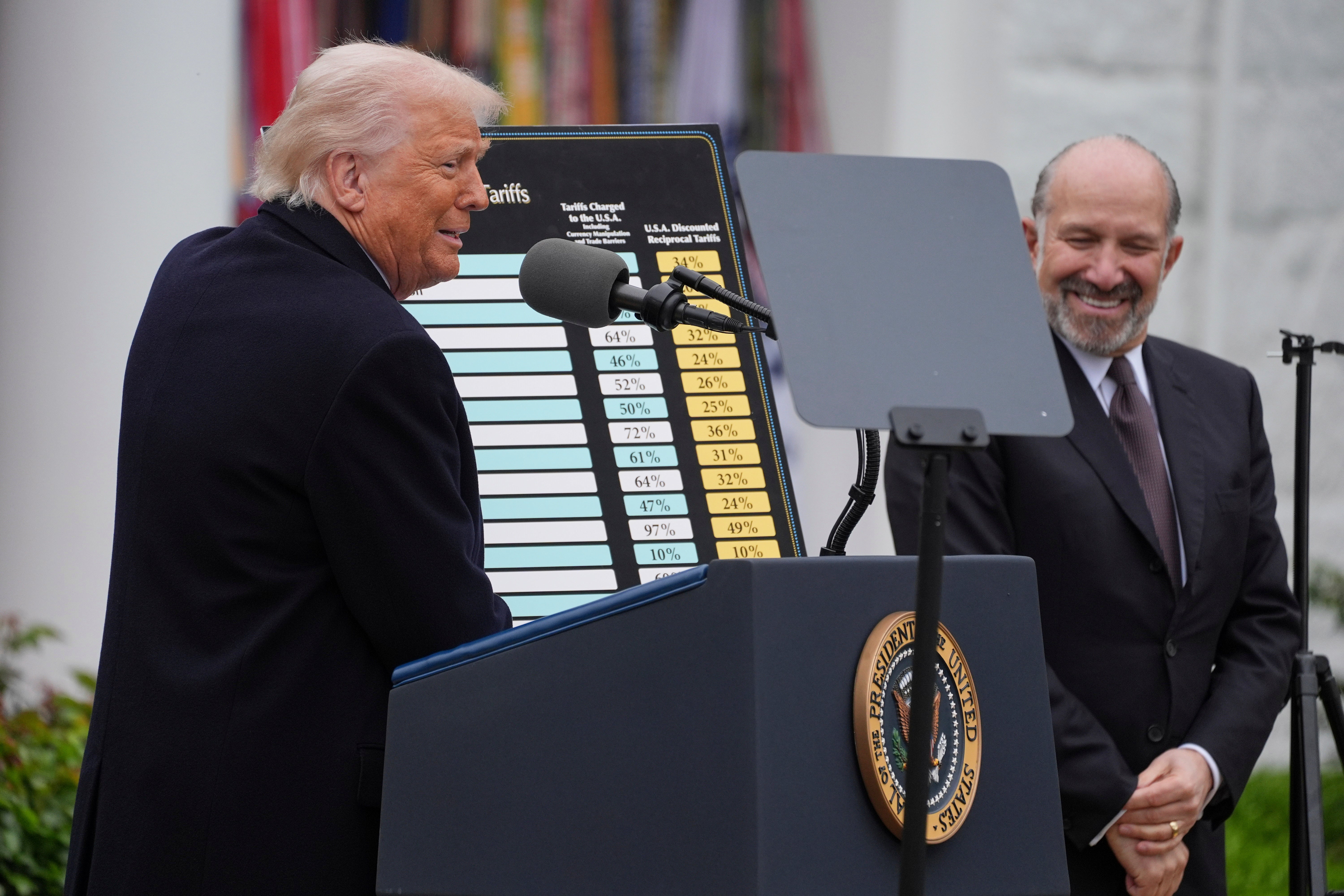The math behind Donald Trump’s sweeping and allegedly “reciprocal” tariffs may actually be simpler than it seems.
With the help of a large chart, the president unveiled his latest wave of tariffs Wednesday on what he called “Liberation Day.” Trump announced blanket levies of at least 10 percent on every nation – with many facing higher but “discounted reciprocal tariffs.”
Tariffs are taxes charged on goods imported to the U.S., but frequently passed on to consumers by companies.
Trump has long promoted the idea of reciprocal tariffs and said the U.S. was going to charge them what they charge America. He claimed the new policy is necessary to balance out American competitiveness.
However, financial journalist James Surowiecki, noted the tariff rate for other nations Trump showed off is not in fact a tariff American manufactures pay, but a calculation using the trade deficit.
For example, according to World Population View, the U.S. trade deficit with Japan is around $62.6 billion and the total amount of exports from the U.S. to Japan is $135.8 billion. Dividing the former figure by the latter figure gives a result of 0.46.
According to Trump’s chart the tariff charged to U.S. goods by Japan is 46 percent.
Similarly, the U.S. trade deficit with Thailand is around $41.5 billion and the total amount of exports is $57.7 billion. Dividing the former figure by the latter figure gives a result of 0.719.
According to Trump’s chart the tariff charged to the U.S. from Japan is 72 percent.
Surowiecki claimed that the tariff rates supposedly charged by other countries to the U.S. and touted by Trump during his speech were “just made-up numbers.”
“South Korea, with which we have a trade agreement, is not charging a 50% tariff on U.S. exports. Nor is the EU charging a 39% tariff,” he said, adding “What extraordinary nonsense this is.”
Surowiecki also noted that in any country where U.S. trade deficit or imports is less than 10 percent, or where there was a surplus, a tariff rate of 10 percent was imposed.

The United Kingdom has a trade deficit with the U.S. of around $-10.3 billion, according to World Population View. The president’s chart showed a tariff rate of 10 percent applied to the UK.
As well as those facing lesser levies, about 60 countries deemed the “worst offenders” face higher reciprocal tariffs nearing, in some cases, 50 percent.
The baseline tariffs go into effect Saturday and reciprocal tariffs start Wednesday.


